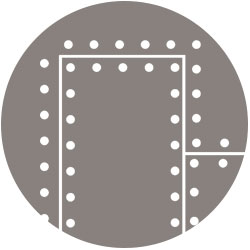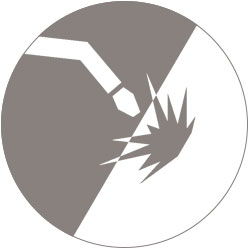Structural Bonding
Replacing Traditional Forms of Fasteners
 Steve Schneider
Steve Schneider
Engineering Sales Representative
Ellsworth Adhesives
Industries around the world are catching on to the improvements offered by modern structural-grade adhesives. Structural adhesive bonding techniques have overtaken traditional assembly methods, like rivets and welding, due to a variety of versatile benefits. Today, there are one or two structural adhesives in nearly every consumer product. From beginning to end, structural adhesives have aided some of the most innovative and sophisticated OEMs to simplify product lines, maximize process efficiency, and elevate finished product quality.
Stronger Than Hardware, Better Than Welds
Not only does a structural adhesive bonding solution exist for almost every assembly, but they are stronger and more reliable than mechanical fasteners like bolts, rivets, and welds. With plenty of benefits and few disadvantages, adhesives are a great choice for many manufacturers.

Adhesives
+ Strong
+ Low modulus of elasticity
+ Protects against corrosion
+ Doesn't oxidize
+ Bonds to dissimilar materials
+ Stable across wide temperature range
+ Vibration resistant
+ Hermetic seal
+ No seams or protrusions
- Rework is difficult
- Adequate bonding surfaces necessary
- Chemically active

Bolts
+ Quick
+ Bonds dissimilar materials
+ Removable
- Stress concentrated at fastener location
- Bolt head protrudes or needs recess
- Subject to fretting and fretting fatigue damage
- Requires torque measurement

Rivets
+ Quick
+ Bonds dissimilar materials
+ Removable
- Stress concentrated at fastener location
- Thermal expansion mismatches
- Rivets protrude from material surface
- Difficult to remove

Welds
+ Strong
+ Bonds instantly
+ Hermetic seal
- Only for compatible metals
- Requires preparation/finishing
- Processing hazards (metal fumes, eye damage, burns)
- Increased susceptibility to corrosion or stress cracking
Chemistries of Structural Adhesives
Three styles of adhesive are generally used for structural bonding applications: epoxies, acrylics, and urethanes. Adhesive selection depends on what materials are to be bonded, operating environment and process specifications.
Epoxies
Excellent at bonding similar substrates
Bonds woods, metals & glass
Comes in 1 or 2 part systems

Stronger Bond

Temperature Resistance

Slow Cure
Acrylics
Bonds similar & dissimilar substrates
Difficulty bonding plastics
Easy-to-use & minimal prep

Weaker Bond

Chemical Resistance

Fast Cure
Urethanes
Bonds similar & dissimilar substrates including plastics
Difficult to integrate into assembly process

Stronger Bond

Vibration Resistance

Slow Cure
Addressing structural challenges begins with an understanding of the options available for fastening composite, metal, and plastic assemblies, and considering alternate manufacturing methods. Compared to traditional rivets and welds, structural adhesives eliminate the costs related to metal preparation and finishing operations, providing efficiencies in the manufacturing process.